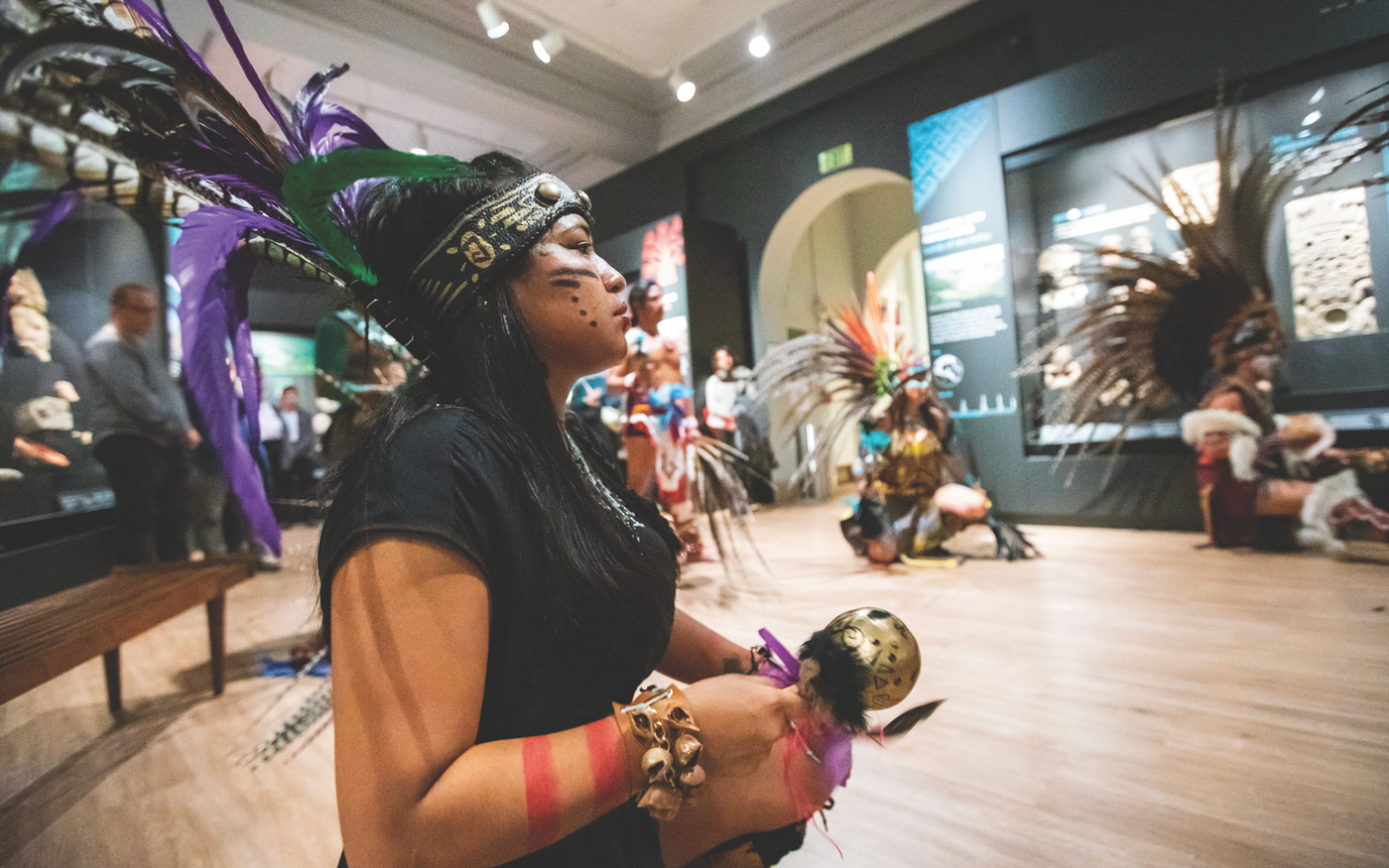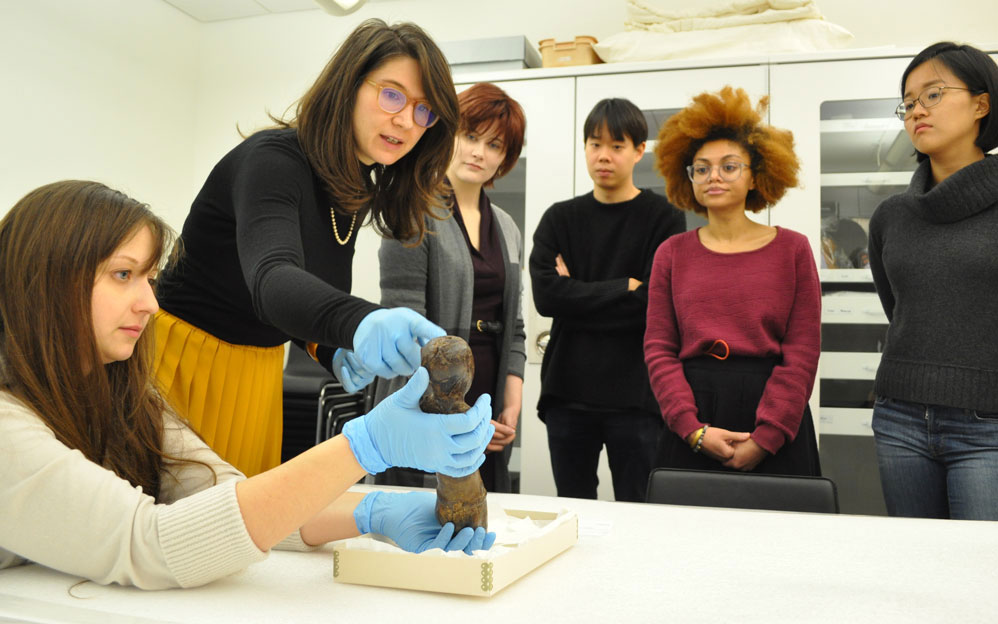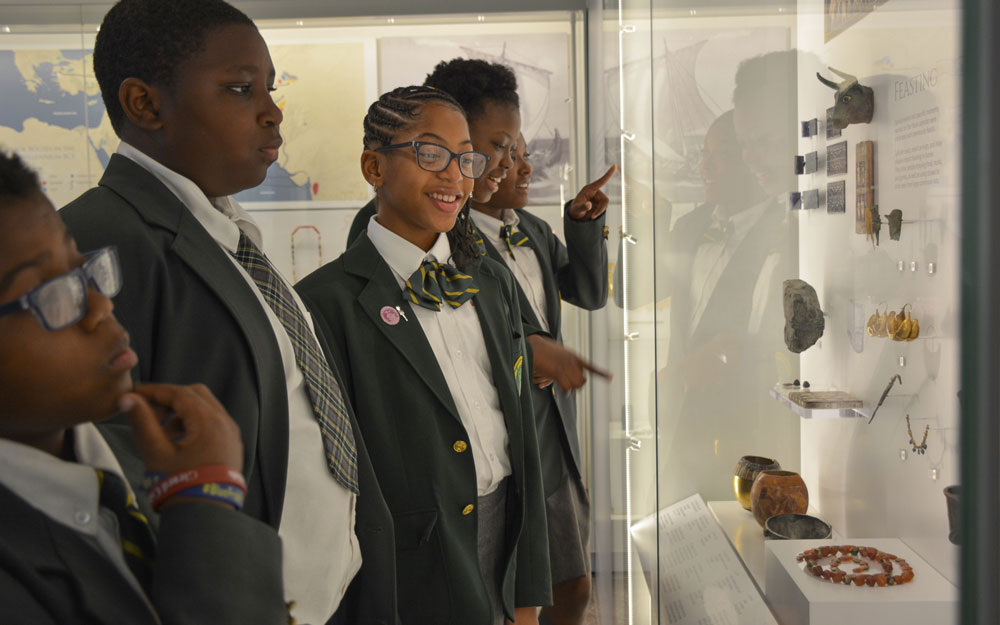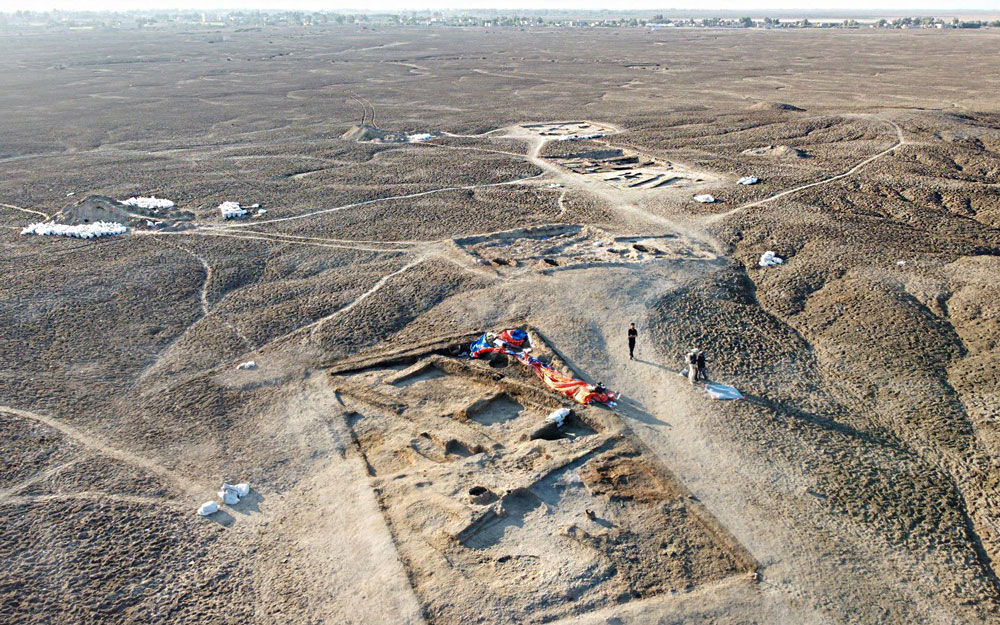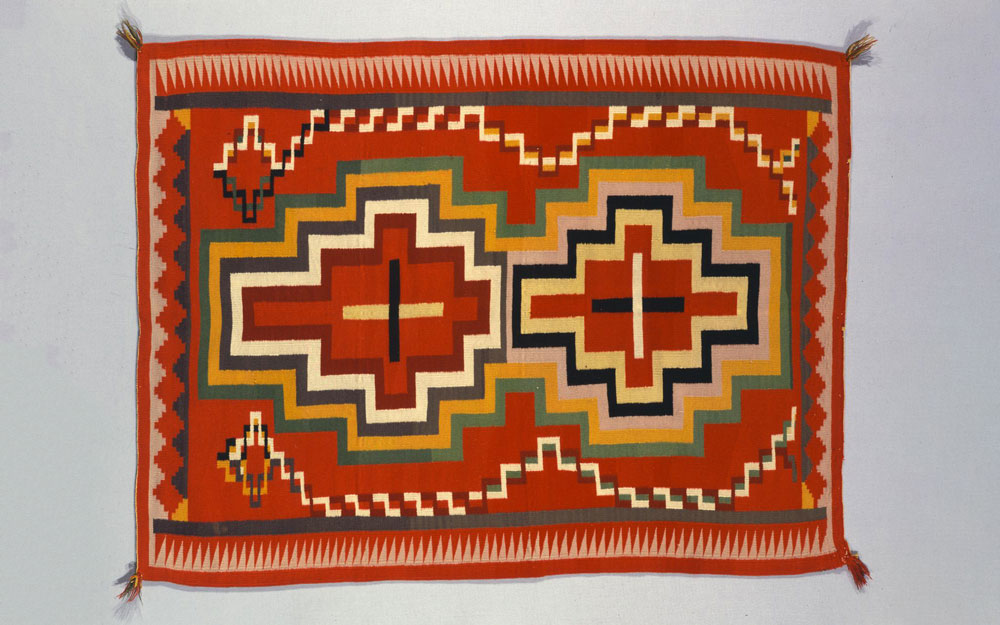Transforming understanding of our common human experience
The Penn Museum respectfully acknowledges that it is situated on Lenapehoking, the ancestral and spiritual homeland of the Unami Lenape.
Home to over a million extraordinary artifacts and archaeological finds, the Penn Museum has been uncovering our shared humanity across continents and millennia since 1887. In bridging archaeology (the study of objects made by humans), with anthropology, (the science of humanity), we chart a course for finding one’s own place in the arc of human history.
We are dedicated to telling powerful stories that emerge from our own excavations and research across the world.
The Penn Museum sparks curiosity, wonder, and endless exploration. We invite everyone to join our incredible journey of discovery and to dig deeper.
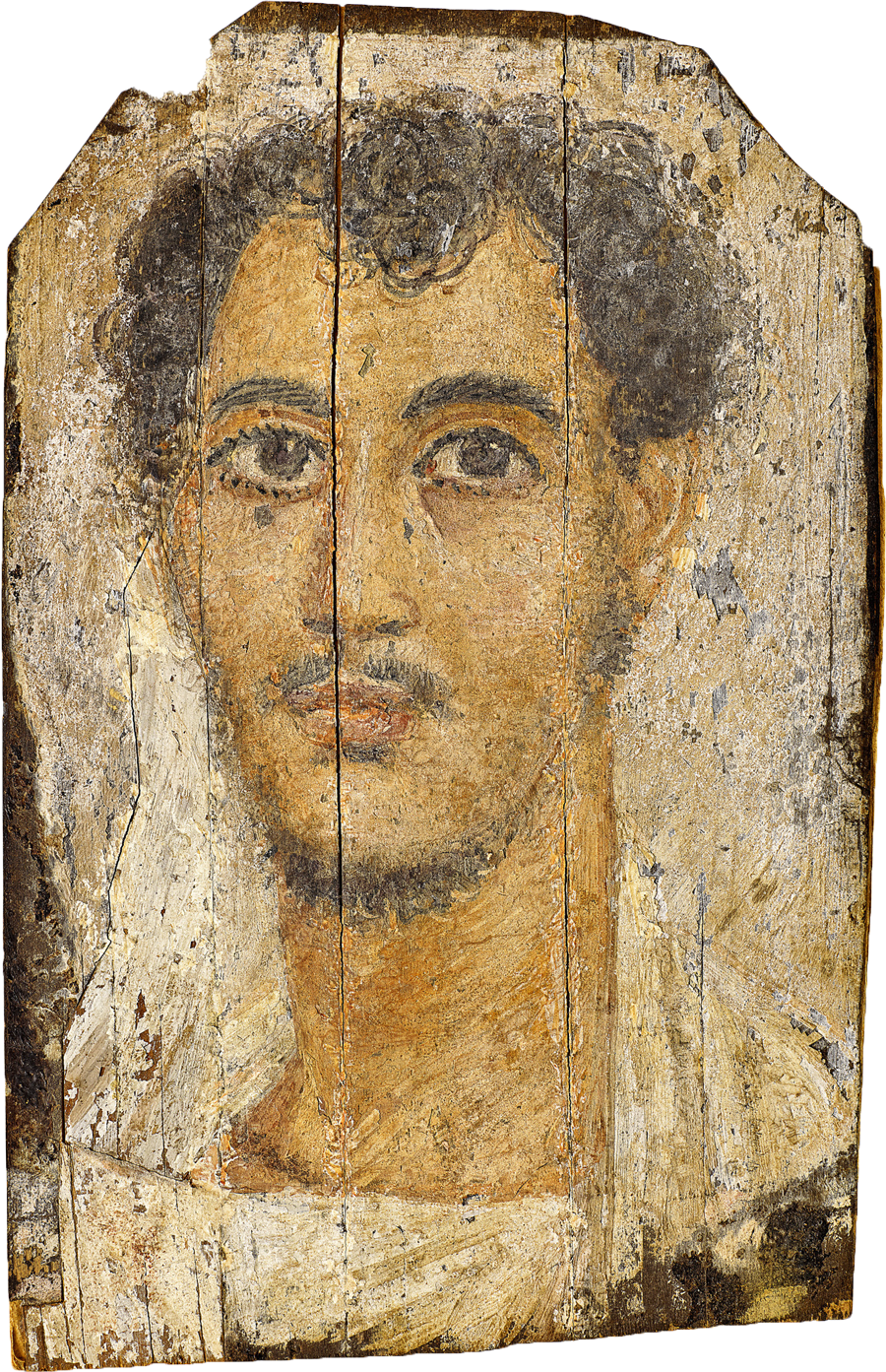
Portrait, Egypt, 200-100 BCE, E16213
Our Mission
Our mission is to be a center for inquiry and the ongoing exploration of humanity for our University of Pennsylvania, regional, national, and global communities, following ethical standards and practices.
We do this by conducting research, stewarding collections, creating learning opportunities, contextualizing and telling stories, and creating experiences for people to contribute to and engage with these stories.
Our Impact
Making archaeology and anthropology accessible.
Over 180,000 visitors experience our galleries, exhibitions, and extensive range of public programs each year, engaging with us onsite, online, in local communities, and around the world.
For Penn undergraduate and graduate students, our Academic Engagement Department offers myriad academic and professional learning opportunities, including intensive classes, and summer fieldwork support. Penn students can also receive teaching and mentorship in archeological science through our Center for the Analysis of Archaeological Materials (CAAM).
Beyond campus, as a leading international archaeology teaching center we reach classrooms in our communities and around the world through onsite and online learning programs. In our flagship partnership with the School District of Philadelphia, we deliver Unpacking the Past, an up-close, hands-on series of lessons sparking middle school students’ curiosity about ancient history.
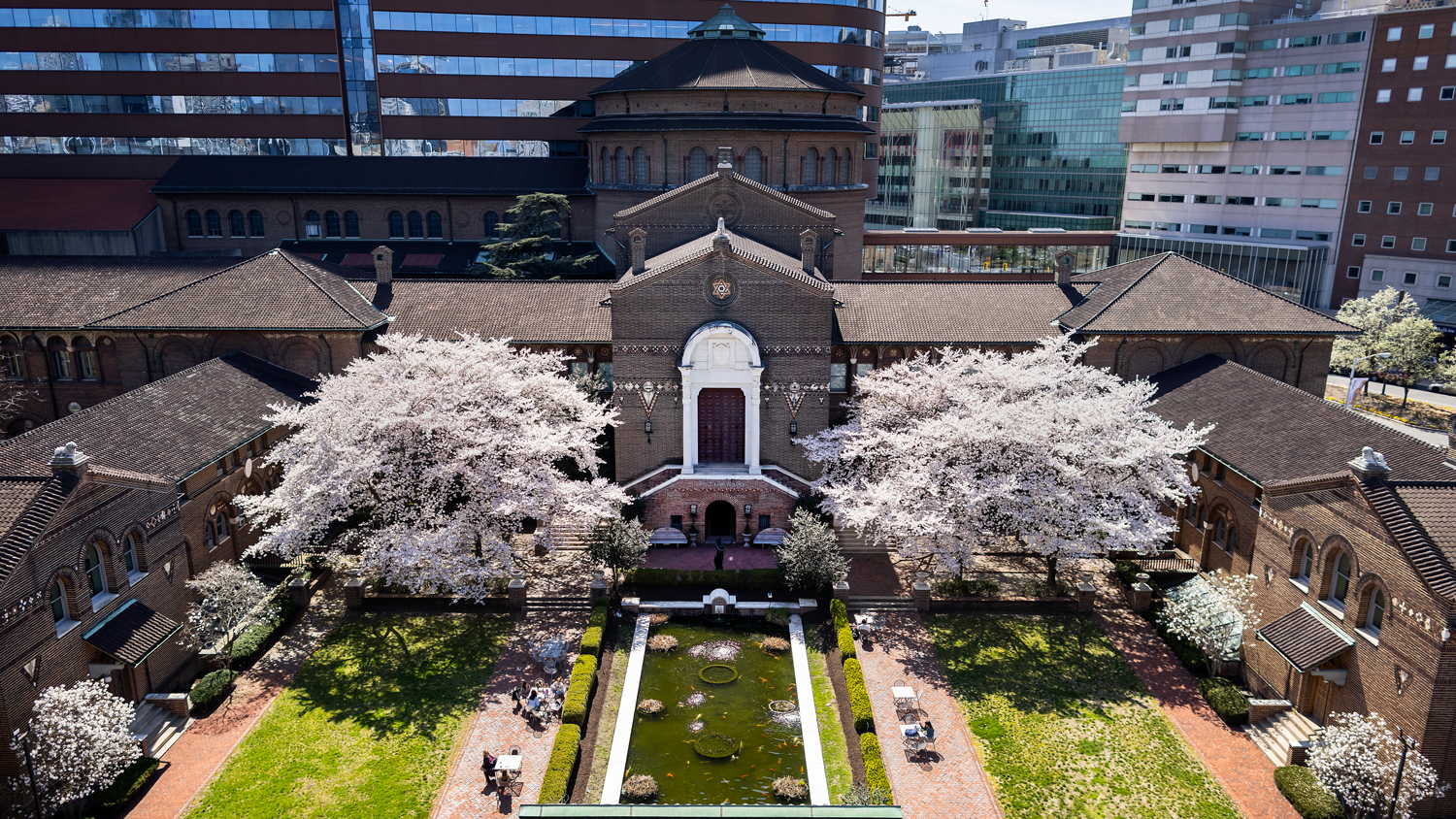
Our Building and Gardens
Our building and gardens are historic marvels, inviting myriad moments for adventure, contemplation, and celebration. Built over the course of more than a century (1899–2005), the Museum incorporates striking architectural styles, soaring galleries that house world-class collections, and state-of-the-art laboratories that yield new discoveries each day. Its tranquil gardens and courtyards are filled with lush foliage, relaxing fountains and ponds, and communal spaces to gather, picnic, and play.
Photo by Eric Sucar
Our Future
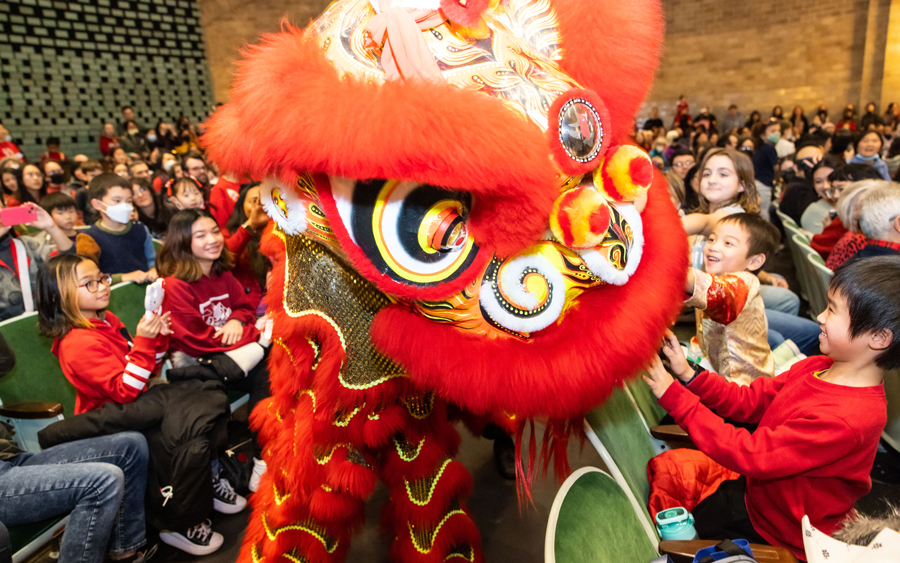
Guided by our aspirational new vision—the Penn Museum transforms understanding of our common human experience—we are committed to improving visitor experience of our galleries and exhibitions, expanding community engagement within and beyond our walls, and upholding ethical standards and practices around our collections, including repatriation work.
Advancing our vision to transform understanding of our common human experience, we are working to fulfil the ten goals of our 2024–2027 Strategic Plan which will collectively maximize the impact and maintain the relevance of our collections and research; position our Museum as a forum for discussion and cultural exchange; and ensure that our infrastructure and resources support our collections, audiences, staff, and the work we do.
From 2018–2022 we opened new galleries of Africa, the Eastern Mediterranean, Mexico and Central America, the Middle East, and a brand-new gallery in our transformed Main Entrance with the 13-ton, red granite sphinx of Ramses II at its heart. In November 2025, the Penn Museum will open a new Native North America Gallery—co-curated with eight Indigenous curators—and in late fall 2026, we will open the Main Level of long-awaited galleries of Ancient Egypt and Nubia.
Humility in reckoning with our past. Confidence in our ability to model best practices within and beyond the Museum.




